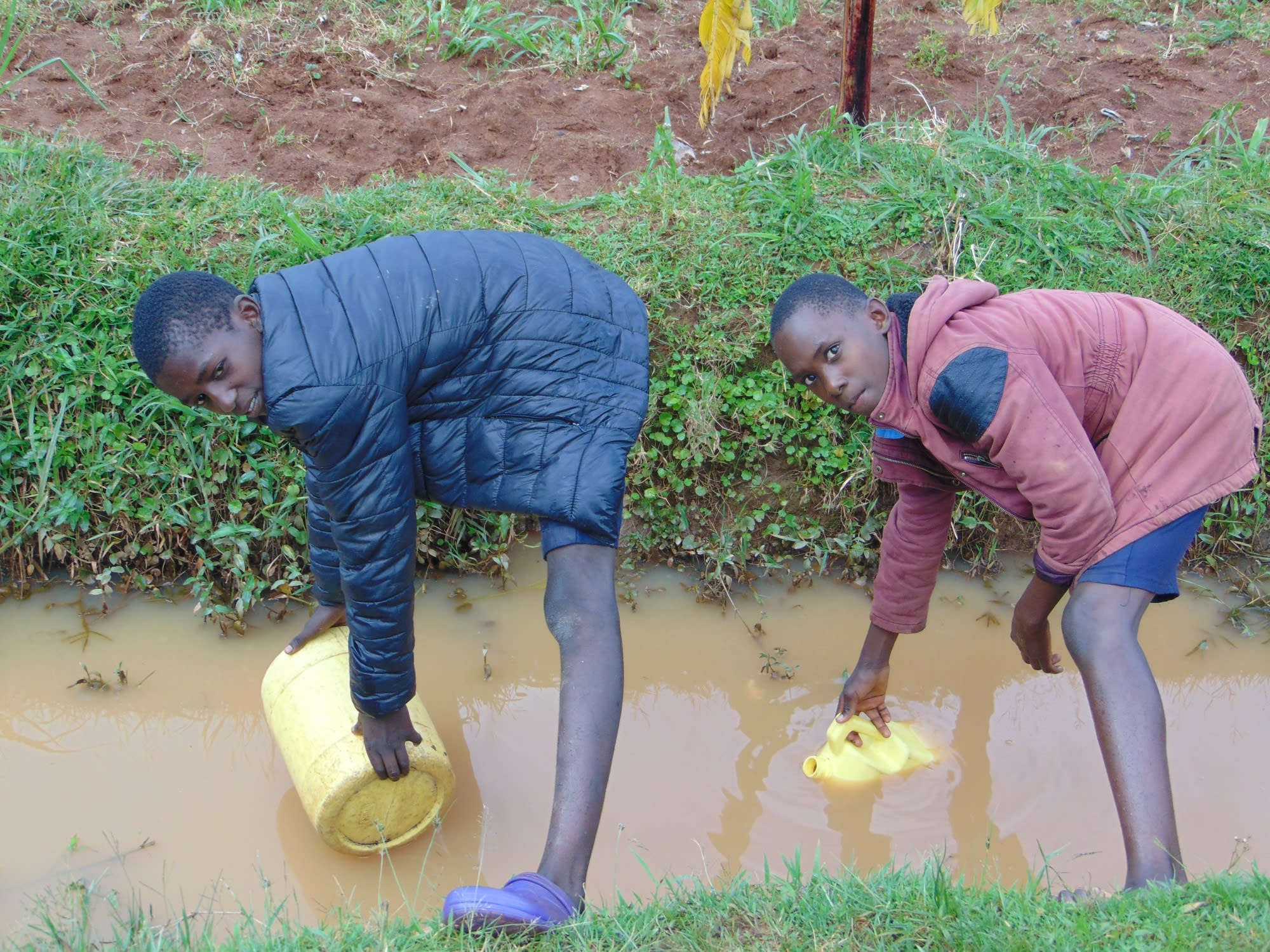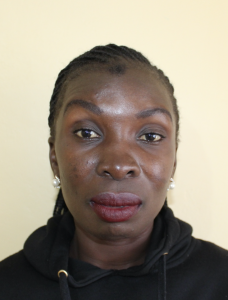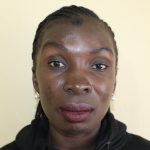(Some photos pre-date the pandemic.)
"As the Senior Teacher, it's really hard to see how children suffer in this school," said Madam Linet Sagire of Kabinjari Primary School.
"Their performance is bad. This is because they waste a lot of time going to fetch water outside the school. Other teachers with the same position as mine really undermine me when we meet. They laugh at the school I am in, saying how I hold a big position and yet the school is poor."
The 431 pupils and 15 teachers and staff that make up Kabinjari Primary School are tired. Tired of walking to get water, tired of getting hurt along the way, and tired of the energy and money they are losing in treating the waterborne diseases that they contract from the water they drink.
Students here must leave school every day to fetch water. They head to a spring in the village, as well as open water sources that include a stagnant trench of muddy water and a small creek, to fetch water for all of their school's drinking, cooking, and cleaning needs. The path is steep, muddy, and often narrow, including a handmade wooden plank bridge over a stream. When it rains, much of the path becomes a slippery stream. Injuries in the name of fetching water are not uncommon. It then becomes an insult to literal injury when the students also get sick from the water they worked so hard to collect.

"They are physically drained," said Field Officer Laura Alulu in her field notes after one of her first visits to the school.
"Looking at the terrain of the place, the children have to go down the slope then climb up while carrying water. This drains them physically. Another negative consequence is how the children struggle for water; they end up fighting each other. Also, when it rains, the place becomes slippery, they fall down and get hurt, and the small bridge they use to cross is also risky for young children."
The spring the students go to has not been maintained well over the years, bringing the quality of the water into question. When students get fed up waiting for their turn to fill their container, the fights break out even though there is really nothing they can do to change the speed of this daily task. The alternative water source - the muddy trench - is faster yet so much worse in quality. Because the water is combined for use back at school, even one container of poor quality water means everyone suffers. Yet every day, the students fetch water from both sources to make it back in time for at least some lessons.
"The current water situation here affects me in a way that I cannot perform my duties well," said Deputy Head Teacher Hadley Shimeka.
"As the Deputy, I am in charge of discipline, so it becomes very hard to solve cases when children get involved in fights when they go to fetch water. Some parents come complaining and this becomes hard to solve such cases. This affects me because I don't feel like I have done my work to perfection."
Established in 1975 under the sponsorship of the Pentecostal Assemblies of God Church, Kabinjari Primary School has never had a water source or even a water storage container to its name. We plan to help change that.
What We Can Do:
Rain Tank
A 75,000-liter rainwater catchment tank will help alleviate the water crisis at this school. The school will help collect the needed construction materials such as sand, bricks, rocks, and water for mixing cement. We will complement their materials by providing an expert team of artisans, tools, hardware, and the guttering system. Once finished, this tank will begin catching rainfall that will be used by the school’s students and staff for drinking, handwashing, cooking, cleaning, and much more.
We and the school strongly believe that all of these components will work together to improve standards at this school, which will help lead to better student academic performance and will help to unlock the potential for these students to live better, healthier lives.
Handwashing Stations
There is currently just one handwashing station for students to clean their hands after using the latrines or before eating lunch, but rarely the water or soap to do so.
The student health club will oversee the two new handwashing stations we will provide, and make sure they are kept clean and in working condition. The club leaders will fill the handwashing stations with water daily and make sure they are always supplied with a cleaning agent such as soap or ash.
VIP Latrines
We will construct two triple-door latrine blocks using local materials that the school will help gather. Three doors will serve the girls while the other three will serve the boys. All of these new latrines will have cement floors that are designed to be easy to use and to clean. And with a rain tank right on school property, there should be enough water to keep them clean.
Training on Health, Hygiene, COVID-19, and More
We will hold a one-day intensive training session with students, teachers, and parents. This training will cover a wide range of topics including COVID-19 symptoms, transmission routes, and prevention; personal and environmental hygiene; and the operation and maintenance of the rain tank, latrines, and handwashing stations. There will be a special emphasis on handwashing.
Our team of facilitators will use a variety of methods to train, including participatory hygiene and sanitation transformation, and asset-based community development. We will initiate a student health club, which will prepare students to lead other pupils into healthy habits at school and at home. We will also lead lectures, group discussions, and provide illustrative handouts to teach health topics and ways to promote good hygiene practices within the school including handwashing and water treatment. We will then conduct a series of follow-up trainings before transitioning to our regularly scheduled support visits throughout the year.

 Rainwater Catchment
Rainwater Catchment
 Rehabilitation Project
Rehabilitation Project







































